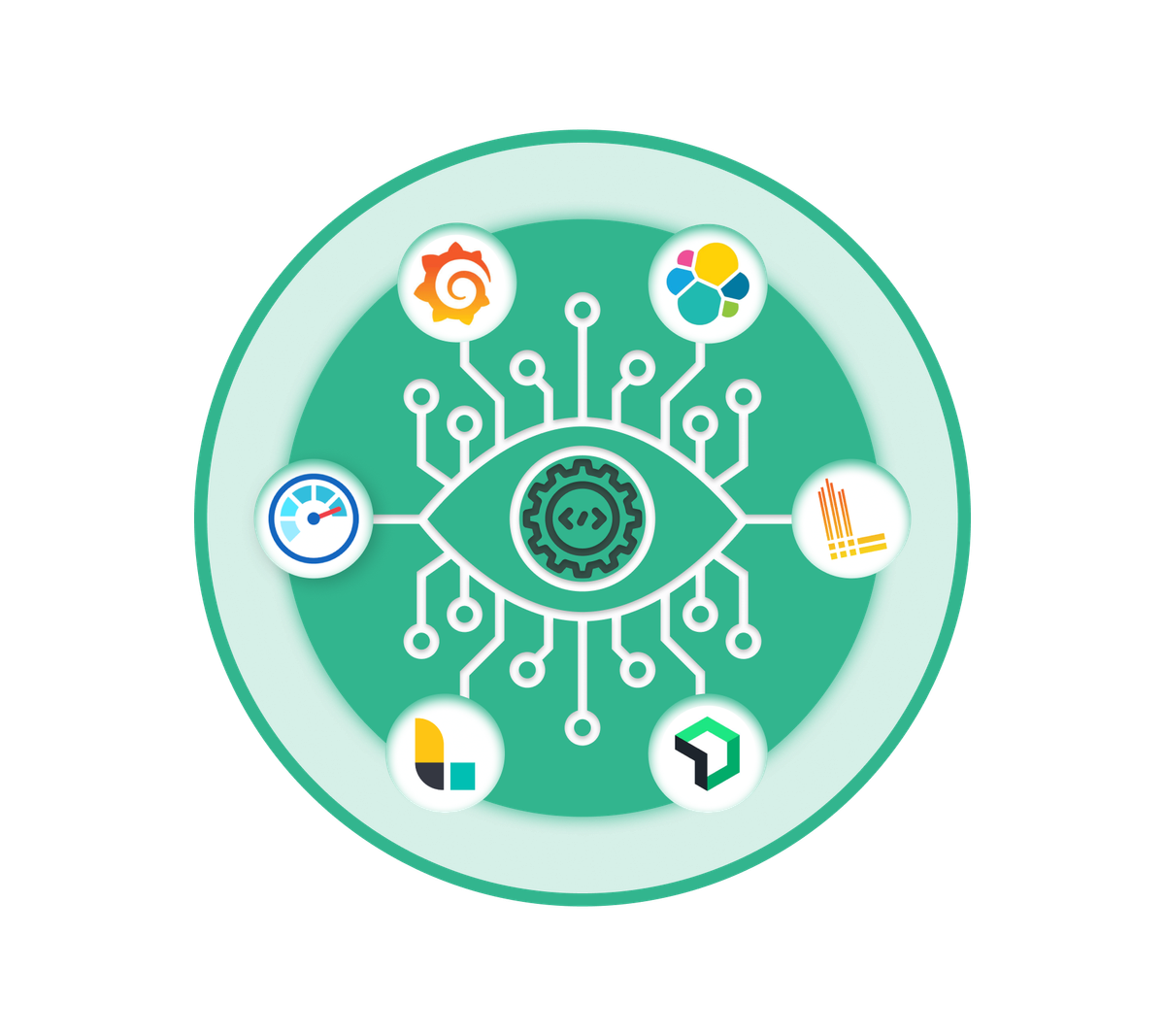This blog is a deeper look at the subjects briefly covered in my blog Understanding Site Reliability Engineering (SRE): SRE 101 and considers the second fundamental Principle mentioned in the blog, namely Monitoring.
Picture yourself as the host of an exquisite gala dinner event. In your role as the host, your vigilant attention is directed towards various crucial aspects. You oversee the culinary preparations, making frequent checks to ensure the food is impeccably prepared. You glance gracefully at your guests, ensuring their comfort and satisfaction throughout the evening. Moreover, your keen ears remain attuned to any signs of concern or commotion emerging from the bustling kitchen. You are meticulously on your toes, orchestrating every detail to guarantee a flawless and memorable evening.
In the realm of digital infrastructure and service management, the role of Site Reliability Engineering (SRE) closely mirrors that of a diligent host. However, instead of overseeing a social gathering, SRE professionals serve as the ever-watchful sentinels of digital systems and services. Their focal point is 'monitoring,' an integral and unwavering facet of their responsibilities. In this exploration, we delve into the pivotal and irreplaceable role that monitoring assumes within the domain of SRE, shedding light on its significance in ensuring the reliability, performance, and seamless operation of modern digital ecosystems.
1. The Pulse Check: Continual System Monitoring
In a manner like how a skilled physician vigilantly monitors a patient's pulse as a vital indicator of their overall health, Site Reliability Engineers (SREs) adopt a similar approach in their domain by continuously tracking the heartbeat of digital systems and services. This perpetual monitoring serves as a crucial diagnostic tool, guaranteeing the smooth operation and optimal performance of these intricate systems. Just as a doctor's careful attention to a patient's pulse provides real-time insights into their well-being, SREs' ongoing surveillance furnishes an immediate and comprehensive snapshot of a system's health.
Use Cases: Continual System Monitoring
- E-commerce Platform Traffic Surge: During high-traffic events like Black Friday sales, SREs monitor system metrics to ensure the e-commerce platform remains responsive. By continuously checking the system's pulse, they can promptly detect and resolve potential bottlenecks, ensuring a seamless shopping experience for customers.
- Cloud-Based Services Availability: In the cloud, SREs monitor server uptime, error rates, and latency. Any anomalies trigger immediate intervention, ensuring uninterrupted service delivery to users and preventing costly downtimes.
- Financial Services Data Integrity: SREs scrutinize transaction processing times and database responses in financial institutions to guarantee efficient operations. This monitoring ensures data integrity and upholds customer trust.
2. Spotting the Smoke Before the Fire
It is universally acknowledged that timely intervention in the face of a small kitchen fire is vastly preferable to grappling with the catastrophic consequences of an entire house consumed by flames. This very principle of proactive vigilance finds its digital counterpart in the practice of monitoring within the discipline of Site Reliability Engineering (SRE). Monitoring, in the context of SRE, serves as a sentinel that keenly observes the health and performance of complex digital systems. Its significance lies in the ability to pinpoint nascent issues, much like a vigilant smoke detector, before they escalate into critical problems. Let us delve into some practical scenarios where monitoring, as employed by SREs, proves instrumental in averting disasters and optimizing system performance:
Use Cases: Proactive Issue Resolution
- Application Performance Optimization: SREs employ monitoring tools to track key performance indicators, such as response times and resource utilization, for critical applications. By promptly identifying deviations from established baselines, they can fine-tune configurations, allocate resources judiciously, and ensure optimal user experiences.
- Resource Scaling: Scalability is a crucial concern in modern digital ecosystems. Effective monitoring allows SREs to monitor resource consumption trends and automatically trigger scaling actions when thresholds are reached. This ensures that the system can seamlessly handle increased traffic and workloads.
- Fault Detection and Resolution: In a distributed system, errors and faults are inevitable. Monitoring helps SREs detect anomalies, such as elevated error rates or system downtimes, enabling them to swiftly pinpoint the root causes and apply fixes, often before users are impacted.
- Capacity Planning: Through historical data analysis and trend forecasting, monitoring assists SREs in capacity planning. This proactive approach ensures that infrastructure resources are provisioned in line with anticipated demand, eliminating the risk of performance bottlenecks or resource shortages.
- Security Threat Mitigation: Security breaches and vulnerabilities pose significant risks to digital assets. SREs leverage monitoring to detect suspicious activities or anomalies in real time, allowing for immediate response and remediation to thwart potential security threats.
3. Precision and Efficiency through Monitoring
Monitoring tools serve as a beacon of clarity in complex systems. They enable SREs to swiftly diagnose and address issues, ensuring efficient problem-solving.
Use Cases: Rapid Issue Resolution
- E-commerce Platform Performance: Consider a bustling e-commerce platform experiencing a sudden surge in traffic due to a flash sale. The spike triggers an unforeseen performance degradation. Without monitoring in place, the source of the issue would remain concealed amidst the labyrinth of interconnected systems. However, with comprehensive monitoring tools, SREs can pinpoint the exact component or bottleneck causing the slowdown. This swift identification translates into rapid fixes, ensuring that customers continue to enjoy a seamless shopping experience, minimizing revenue loss, and upholding the platform's reputation.
- Cloud Infrastructure: In a cloud-driven ecosystem, an abrupt service outage can have far-reaching consequences, impacting businesses, customers, and revenues. Without effective monitoring, detecting the underlying cause could lead to a protracted investigation, exacerbating downtime. Conversely, robust monitoring tools empower SREs to swiftly identify the root cause. Whether it is a network issue, a misconfigured virtual machine, or a resource utilization problem, the precise diagnosis expedites remediation efforts, reducing downtime to a bare minimum.
- Financial Services: In the highly regulated and data-sensitive realm of financial services, any operational disruption can have significant compliance and reputational implications. Monitoring solutions are indispensable here, as they enable SREs to promptly identify irregularities, security breaches, or system failures. By swiftly isolating the issue, these professionals can initiate immediate corrective measures, ensuring data integrity, regulatory compliance, and customer trust.
4. Ensuring Uninterrupted Services: Mitigating Downtime
We have all experienced the exasperation of attempting to access a website or utilize an application, only to be met with an unresponsive or malfunctioning service. This scenario underscores the paramount importance of meticulous monitoring in the field of Site Reliability Engineering (SRE). Monitoring serves as a potent tool to pre-emptively avert such frustrating downtimes and disruptions. One of the key use cases of SREs is to act as sentinels, constantly vigilant over the health and performance of digital systems. Through real-time monitoring and the implementation of robust alerting mechanisms, SREs proactively detect and diagnose issues that could potentially lead to service outages. Let us explore some illustrative examples of how SREs harness monitoring to maintain service reliability:
Use Cases: Upholding Service Reliability
- Website Availability: SREs diligently track the availability of a company's website. They set up automated checks that periodically probe the website's responsiveness from various global locations. In the event of an unusual spike in response times or a sudden drop in availability, alerts are triggered, allowing SREs to swiftly investigate and rectify the issue before it escalates into a full-blown outage.
- Application Performance: For mission-critical applications, SREs closely monitor performance metrics such as response times, error rates, and resource utilization. This granular monitoring enables them to identify performance bottlenecks, memory leaks, or other issues that might degrade the user experience. By addressing these concerns proactively, SREs maintain optimal application performance and minimize user frustration.
- Load Balancer Efficiency: SREs oversee the load balancers that distribute incoming traffic across multiple servers or data centers. Through continuous monitoring of the load balancer's operation, they can detect imbalances, congestion, or faulty routing algorithms. By rectifying these issues promptly, SREs ensure that the load balancer effectively distributes traffic, preventing service degradation.
5. Continuous Evolution and Adaptation
Monitoring extends beyond mere problem prevention; it serves as a cornerstone for ongoing improvement and optimization. As Site Reliability Engineers (SREs) meticulously track system performance metrics over time, they harness invaluable insights that can spark meaningful enhancements, resulting in an elevated user experience.
Use Cases: Continuous Improvement
- Resource Scaling and Optimization: Consider a cloud-based e-commerce platform that experiences significant traffic spikes during holiday seasons. By closely monitoring the system's resource utilization and performance patterns, SREs can discern the need for dynamic resource scaling. When the data reveals a recurring surge in traffic, SREs can proactively adjust server capacity, ensuring that the platform remains responsive and resilient. This adaptability not only prevents downtime but also enhances the user experience by averting sluggishness during peak demand periods.
- Code Efficiency Enhancements: In a large-scale software application, ongoing monitoring of code execution and response times provides SREs with critical feedback on software performance. Identifying bottlenecks or suboptimal code segments enables them to collaborate with developers to fine-tune the application. By making code improvements, SREs ensure that the application operates more efficiently, reducing latency and delivering faster responses to user requests. This process exemplifies how monitoring plays a pivotal role in driving continuous software refinement.
- Capacity Planning for Future Growth: SREs responsible for managing a data centre’s infrastructure continually monitor server utilization and storage capacities. By tracking resource consumption trends, they can forecast when additional hardware or storage upgrades will be necessary to accommodate anticipated growth. This forward-looking approach ensures that the infrastructure is always prepared to handle increased demands, preventing potential performance degradation as user populations expand.
Finally
In conclusion, monitoring is the ever-vigilant guardian of digital systems in the world of Site Reliability Engineering. It prevents disruptions, optimizes performance, and ensures an exceptional user experience. Next time you enjoy a flawless online interaction, remember the SRE team and their monitoring tools working tirelessly behind the scenes to make it happen.

